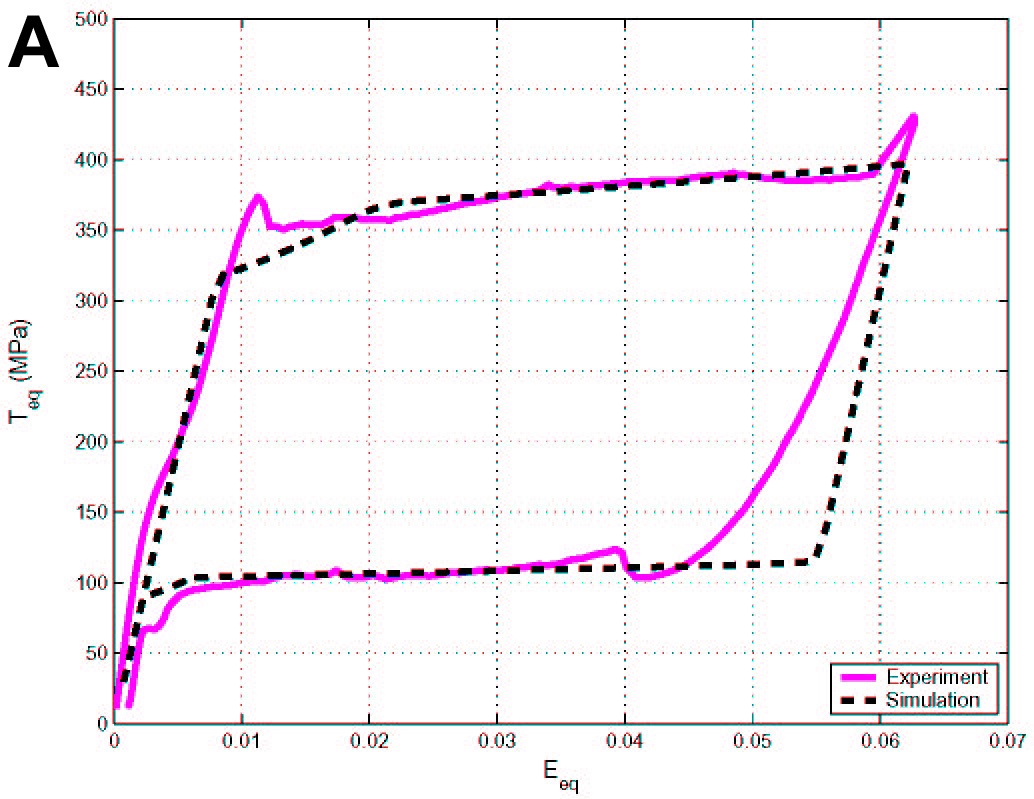human rights and tobacco control network submission to the committee on economic, social and cultural rights pre-sessional working gro
Human Rights and Tobacco Control Network
Submission to the Committee on Economic, Social and Cultural Rights
Pre-Sessional Working Group, 47th Session, 14 November- 2 December,
2011
Tobacco Control and the Right to Health
Tobacco will kill an estimated one billion people in the 21st century
in the absence of aggressive action by governments to advance tobacco
control and smoking cessation. Eighty percent these deaths will be in
developing countries – those least able to manage this epidemic. One
in two people with a lifetime history of smoking will die from a
tobacco related disease and 50% of these deaths will be in middle age.
The human stories behind these statistics are so often heartbreaking.
Not only illness and death, but also the impact on families due to
loss of primary breadwinners, the toxic exposures and lost educational
opportunities for children who work in tobacco farming, environmental
degradation through deforestation and runoff of pesticides into rivers
and streams, and the contribution of tobacco purchases to increased
poverty and malnutrition. The World Health Organization projects
increasing numbers of people who smoke, particularly as populations
grow, over the next 20 years, with women in low- and middle-income
countries being a particular target of tobacco marketing.
A broad evidence base supports a combination of legal, policy,
medical, environmental and behavioral interventions that governments
can take to control tobacco and improve health. Tobacco taxes, clean
indoor air laws, comprehensive bans on advertising and promotion,
public information campaigns, graphic warning labels on tobacco
products and smoking cessation have all been shown to reduce tobacco
consumption and dependence. As such, States Parties to the Convention
on Economic, Social and Cultural Rights are obligated to pursue
tobacco control under their duties to respect, protect and fulfill
Article 12: the Right to the Highest Attainable Standard of Health.
The following submissions to the 47th Pre-Sessional Working Group of
the Committee on Economic, Social and Cultural Rights summarizes the
tobacco control content within each State Party report. Each
submission concludes with five to six key recommendations for
improvement and a list of questions that the Committee can raise to
country representatives to encourage stronger tobacco control
policies. HRTCN believes that these tobacco control strategies and
recommendations sit at the heart of government obligations to respect,
protect and fulfill the right to the highest attainable standard of
health.
HRTCN works to advance a human rights based approach to tobacco
control – utilizing the legal remedies and reporting requirements of
current treaties and conventions, including the recent Framework
Convention on Tobacco Control, the Convention on the Rights of the
Child (CRC), the Convention on the Elimination of Discrimination
Against Women (CEDAW) and the Covenant on Economic, Social and
Cultural Rights. HRTCN will educate on and utilize measures that are
currently accessible and will encourage adoption of new measures in
order to decrease the morbidity and mortality of the people with the
least agency to claim their rights.
Tobacco Control and the Right to Health in Turkmenistan
The Human Rights and Tobacco Control Network (HRTCN) has reviewed
Turkmenistan’s report to the Committee on Economic, Social and
Cultural Rights with respect to tobacco control and the right to
health. On August 11, 2011 Turkmenistan became the latest country to
sign and ratify the Framework Convention on Tobacco Control. HRTCN
commends Turkmenistan for joining the Framework Convention and, in the
spirit of this moment, calls on Turkmenistan to devote more resources
and greater attention to tobacco control under Article 12: the Right
to the Highest Attainable Standard of Health. A national action plan
is in progress and hopefully will strongly address implementation of
the Framework Convention.
HRTCN calls the Committee’s attention to Turkmenistan’s alarming lack
of tobacco use monitoring and surveillance. Turkmenistan has not
completed any of the WHO international tobacco use surveys, including
the Global Adult Tobacco Survey (GATS) and the Global Youth Tobacco
Survey (GYTS). Most troubling, Turkmenistan’s submission to this
Committee does not discuss tobacco or smoking under reporting on
Article 12. The only mention of tobacco in the report outlines
prohibitions against children working in the tobacco industry. There
is no discussion of tobacco’s impact on population health in
Turkmenistan, despite the fact that research suggests tobacco use the
risk factor responsible for the second greatest number of life-years
(DALYs) lost in Turkmenistan. Forecasting shows that Turkmenistan’s
smoking epidemic is accelerating. The last available adult smoking
prevalence demonstrated 27% male and 1% female rates. The majority of
this increase will come from a greater number of women initiating
smoking if policies are not quickly introduced. Curbing this epidemic
will require prevention, but also expanded smoking cessation services
particularly for the men.
In light of these concerns, HRTCN asks the Committee to raise the
following issues to Turkmenistan’s country representative:
1.
Surveillance: Increase surveillance of tobacco use among youth and
adults. Up-to-date data on tobacco use is essential for designing
effective, evidence-based intervention policies. In addition to
nationally and locally sponsored surveys, HRTCN recommends that
Turkmenistan complete international surveys such as GATS and GYTS.
2.
Health Systems: Recognize opportunities to promote tobacco control
through existing health regulations, programs and priorities. For
example, the Labor Protection Act (1993) gives employees the right
to a safe working environment. Existing health programs also seek
to reduce respiratory illnesses among children but currently do
not address second-hand smoke exposure.
3.
Smoking Cessation: 1. Strengthen education on tobacco control and
smoking cessation among health professionals and encourage smoking
cessation in the medical community to create smoke-free role
models. 2. Integrate smoking cessation services such as quit lines
and pharmacotherapies into the health system.
4.
Public Awareness: Encourage policy makers and the public to
appreciate the connection between tobacco use and the two leading
causes of excess mortality in Turkmenistan: cardiovascular disease
and cancers. Turkmenistan’s report to the Committee discusses
these health outcomes but ignores key exposure such as smoking.
5.
Local Tobacco: Develop and enforce specific policies for reducing
the use of tobacco particular to Turkmenistan and used frequently
by youth. Examples include the prominence of hookah tobacco and
nas, a mix of tobacco, ash and lime particular to Turkmenistan.
Tobacco Control and the Right to Health in Estonia
The Human Rights and Tobacco Control Network (HRTCN) has reviewed
Estonia’s report to the Committee on Economic, Social and Cultural
Rights with respect to tobacco and the right to health. HRTCN is
concerned by the report’s limited discussion of tobacco control under
Article 12. However, Estonia should be congratulated for 1) ratifying
the Framework Convention on Tobacco Control (FCTC) in 2005 and 2)
their recent completion of a Joint National Assessment for Tobacco
Control with WHO-Europe. Estonia should be poised to implement the
recommendations within this Joint National Assessment in the near
future.
The Estonia report to CESCR notes the 10 year survival difference
between men(67 years) and women (77 years), and highlights the impact
of cardiovascular diseases, as well as mental and addiction disorders
on morbidity and mortality. However, it does not mention the adult
male smoking prevalence (in 2010) of 37% with women at 18.7% - for an
overall prevalence rate of 26%. In addition there is an increasing
adult prevalence rate of smoking in lower socioeconomic classes – a 7
percentage increase while university educated adults decreased 18
percentage points between 1994 and 2010. Of related concern is the
rising rate of women smoking during pregnancy: currently 8.6% of women
smoke during their pregnancy. In addition, the Estonia report to CESCR
does not mention adolescent smoking prevalence: 31.5% of boys and 30%
of girls smoke; of concern is the growing use of waterpipe smoking,
particularly among girls at 25.1% (2009-2010) from 16.3% (2005-6) and
boys at 25.9% (2009-10) from 25.5% (2005-6).
A ‘new’ Tobacco Control Act is mentioned in the Estonian Report - but
it is unclear if this is the Act of 2005 or a more recent update. The
Report mentions the lung cancer mortality – one of the highest male
age standardized rates in Europe – 55.6 for men (compared to 40.5 for
EU-27) and 8.0 for women (compared to 12.8 for EU-27). These rates are
directly attributable to smoking rates in Estonia.
Excellent recommendations for improving tobacco control, with
significant consequences for overall health in Estonia, are included
with the recent Joint National Assessment. HRTCN would ask the
Committee to have the Estonian country representative address the same
recommendations:
1.
A Ministerial Tobacco Control Task Force established under the
current Cardiovascular Disease Strategy Council with provisions
that tobacco control is made a priority
2.
A national tobacco control roadmap
3.
Increased funding for tobacco control – which would include
allocation of tobacco tax revenues to this effort
4.
Implementation of key WHO FCTC and EU directives re: pictorial
pack warning, flavoured tobacco products, strict point-of-sale
restrictions; strengthened smokefree laws to eliminate designated
smoking rooms so that everyone is accorded a safe public or
working environment
5.
Increased support with for coordinated evidence-based tobacco
cessation support services
See: Joint National Capacity Assessment for Tobacco Control:
http://www.euro.who.int/__data/assets/pdf_file/0004/142492/e95015.pdf
Tobacco Control and the Right to Health in Israel
The Human Rights and Tobacco Control Network (HRTCN) has reviewed
Israel’s report to the committee on Economic, Social and Cultural
Rights with respect to tobacco control and the right to health. Israel
is to be commended for ratifying the Framework Convention on Tobacco
Control in August 2005, pioneering smokefree legislation in 1983 and
amending those laws numerous times, most recently in 2007; for
subsidizing cessation medications and other cessation services to all
citizens since January 2010, and for passing a National Tobacco
Control Plan in 2011. However, since its implementation, Israel could
commit more resources and greater attention to tobacco control under
Article 12: the Right to the Highest Attainable Standard of Health.
Israel notes in their Committee Report that 18.6% of women and 36% of
men smoked at least once per day (note: these numbers are less than
those for Arab males at 55.2% and Arab females at 4.6%). More recent
data demonstrates overall adult smoking prevalence of 23.3% (male 32%,
females 15% with Jewish males 28%, Jewish females 16%, Arab Males 52%,
Arab females 9.7%). Of concern is the stagnant overall population
smoking rate and the particularly high Arab male rates - the newly
approved National Tobacco Control Plan should improve these
statistics.
A 2010 Health Minister’s Report on Smoking demonstrated a smoking
prevalence of 1.6% in Jewish 13-14 year olds and 1.1% in Arab ages
13-14. It is critical to understand tobacco prevalence rates in older
adolescents. A recent GYTS was reported from Bedouin youth from the
Negev desert region of Israel (albeit a small representation of Arab
youth in Israel). This descriptive study suggested high prevalence for
both boys and girls with high levels of social acceptability for
smoking within this population. This information combined with the
higher rates of lung cancer in Arabs and the concerns from the
Physicians for Human Rights relative to availability of health care to
the Arabs within the Negev region suggest increased tobacco control
resources should be provided to disparate populations.
Israel should be commended for being the first country in the world to
utilize the FCTC in litigation to provide a smokefree venue (right to
a health environment) for a pregnant woman. The Israeli High Court of
Justice cited the FCTC and Israel’s ratification of this treaty to
protect all inhabitants from secondhand smoke, in this particular
case, in a restaurant. Israel has had a smokefree law for many years –
and enforcement of it is critical. Additionally, Israel recently
passed a law that will ban vending machines from the country as of 1
January 2014. Vending machines are key resources for youth attempting
to buy tobacco, and banning such sales should help with preventing
youth from smoking.
In light of the above, HRTCN would ask the Israeli country
representative to address the following issues:
1.
Strict enforcement of national smokefree laws particularly in all
educational institutions.
2.
Continue to increase tobacco taxes – and allocate a substantial
portion to fund tobacco control
3.
Ban all advertising of tobacco and establish graphic warning
labels on tobacco products
4.
Increase healthcare provider knowledge and interventions for
tobacco cessation
5.
Improved tobacco use prevalence surveys that include all products
in all populations on a regular basis to provide data to guide
interventions, including regarding exposure to secondhand smoke.
6.
Provide full, sustainable funding for the tobacco control
department in the Ministry of Health, and the National Tobacco
Control Plan.
Tobacco Control and the Right to Health in Cameroon
The Human Rights and Tobacco Control Network (HRTCN) has reviewed
Cameroon’s report to the Committee on Economic, Social and Cultural
Rights with respect to tobacco control and the right to health.
Cameroon is to be commended for ratifying the Framework Convention on
Tobacco Control in February 2006. However, since its ratification,
Cameroon could commit greater attention particularly with reference to
national policy changes in tobacco control under Article 12: the Right
to the Highest Attainable Standard of Health. It is understood that
Cameroon is most concerned with infectious and parasitical diseases,
but they also recognize in their report “The increasing trend in the
prevalence of certain conditions such as arterial hypertension,
diabetes mellitus and cancers also gives grounds for concern.” The
increasing prevalence of chronic diseases is greatly due to tobacco
use in more developed economies.
Smoking prevalence is estimated to be 28.8% in males and 8% in females
with over one-third exposed to secondhand smoke. For youth, the Global
Youth Tobacco Survey in 2008 demonstrated 13-15 years old at 17% of
boys and 9.7% of girls currently use a tobacco product. These ‘low’
rates are of concern because approximately 50% of the population is
under 20 and enforcement of advertising bans aimed at youth is weak.
Cameroon grows tobacco, mostly on small farms rather than large
plantations and do export a portion of its produce. Also, Cameroon
manufactures tobacco products within a local company -SITABAC. Both
tobacco agriculture and manufacture of tobacco products provide
substantial income to the government. There has been, and probably
still is, concern over tobacco smuggling and illicit trade and
requires much stricter enforcement of current laws. British American
Tobacco remains a very strong competitor within Cameroon, despite
withdrawal of its manufacturing plant in 2007.
In a report* intended for the tobacco industry in 2010, it was noted
that Cameroon was good at passing laws but not implementing or
enforcing them well. The tobacco industry is readily able to use
sponsorships, promotions and ‘unregulated media’. It also notes the
poor enforcement of the smoking ban within educational and
governmental institutions.
In summary, Cameroon should be congratulated for ratifying the FCTC
and convening a Group of Experts on Tobacco Use (2007) in order to
address tobacco control within their country. However, it is key to
implement and enforce the tobacco control policies within the FCTC
before any health benefit can be achieved. In light of these concerns,
HRTCN would ask the Committee to have the Cameroon country
representative address the following recommendations:
1.
A national comprehensive smokefree law that would include all
public places and workplaces.
2.
Increase tobacco excise taxes with effective implementation,
including tax stamps that cannot be counterfeited and decrease
tobacco product smuggling. Use a portion of the tax income to
support tobacco control nationally and regionally.
3.
Strengthen and enforce comprehensive advertising bans, including
sponsorships and free trial products
4.
Support agriculture transitions from growing tobacco to a
sustainable food crop.
5.
Establish regular surveillance mechanisms to document and
understand the status of tobacco use, including secondhand smoke
exposure
*http://www.euromonitor.com/tobacco-in-cameroon/report (accessed 28
August 2011)
Tobacco Control and the Right to Health in Argentina
The Human Rights and Tobacco Control Network (HRTCN) has reviewed
Argentina’s report to the Committee on Economic, Social and Cultural
Rights with respect to tobacco control and the right to health. HRTCN
commends Argentina for making progress on tobacco control during the
recovery period following its economic and currency crisis at the
beginning of the decade. Argentina’s report outlines the National
Program for Tobacco Control under the Ministry of Health, but contains
few details on tobacco control in Argentina.
Argentina remains one of the few non-Party States to the Framework
Convention on Tobacco Control. Argentina signed the FCTC in 2003, but
has yet to ratify the Framework Convention. Ratification would
strengthen tobacco control and the right to health in Argentina by
obligating the Argentine government to act on the statements of
principles and actionable steps included in the FCTC.
HRTCN also calls the Committee’s attention to high prevalence of
tobacco use in Argentina. According to the Global Youth Tobacco
Survey, one-quarter of Argentine youth currently smoke cigarettes and
over half are exposed to second-hand smoke at home.1 Argentina’s
report to the Committee acknowledges that tobacco remains highly
accessible and retains a positive image in Argentine society. Smoking
also remains common among Argentine medical professionals. One-third
of medical students reported current smoking in 2005, and only 5% had
received training on tobacco control or smoking cessation.2
In light of these concerns, HRTCN asks the Committee to raise the
following issues to Argentina’s country representative:
1.
Ratify the FCTC: Urge Argentina to ratify the Framework Convention
on Tobacco Control and mainstream its articles and protocols into
the National Program for Tobacco Control. Ratification would
require Argentina to regularly report on progress to the
international community; it is the only country in South America
to not have ratified the Convention.
2.
Clean Indoor Air Laws: Draft and pass national clean indoor air
legislation to reduce exposure to environmental smoke at schools,
offices, restaurants/bars and public spaces. A national law is in
progress for implementation later in 2011, but it still has
exemptions.
3.
Tobacco Taxes: Increase tobacco excise taxes to encourage smoking
cessation and discourage initiation into smoking. A World Health
Organization review concluded that tobacco price increases are the
single most effective intervention to reduce demand for tobacco.
4.
Smoking Cessation: 1. Strengthen education on tobacco control and
smoking cessation among health professionals and encourage smoking
cessation among the medical community to create smoke-free role
models. 2. Expand smoking cessation services including quit lines
and access to pharmacotherapy, particularly in light of high
exposure among youth to passive smoking at home.
5.
Tobacco Industry Influence: Counter tobacco industry influence and
capture of public health policymaking. Transnational tobacco
companies and their Argentine subsidiaries have consistently acted
to undermine comprehensive tobacco control measures in Argentina.3
6.
Tobacco Agriculture: Mainstream tobacco control into agricultural
development schemes to help farmers transition away from growing
tobacco.
1 Global Youth Tobacco Survey (GYTS) Survey (http://www.cdc.gov/
tobacco/global/gtss/index.htm)
2 Global Health Professions Student Survey (GHPSS) Survey (http://www.cdc.gov/
tobacco/global/gtss/index.htm)
33 Sebrie, E. and Barnoya, J. (2005). “Tobacco industry successfully
prevented tobacco control legislation in Argentina.” Tobacco Control,
vol. 14(5):e2
 EKIDS SUPER REFERENCE GUIDE FOR PHYSICIANS PRESENTED BY THE
EKIDS SUPER REFERENCE GUIDE FOR PHYSICIANS PRESENTED BY THE MMA312 PAGE 3 WIPO E MMA312 ORIGINAL ENGLISH DATE
MMA312 PAGE 3 WIPO E MMA312 ORIGINAL ENGLISH DATE RETRATO DE GILLY HOPKINS 1 LUEGO DE LEER LA
RETRATO DE GILLY HOPKINS 1 LUEGO DE LEER LA PROCEEDINGS OF THE SHAPE MEMORY AND SUPERELASTIC TECHNOLOGIES CONFERENCE
PROCEEDINGS OF THE SHAPE MEMORY AND SUPERELASTIC TECHNOLOGIES CONFERENCE MEETING OF THE ORPINGTON BUSINESS FORUM (OBF) DATE 13TH
MEETING OF THE ORPINGTON BUSINESS FORUM (OBF) DATE 13TH A PPLICATION FORM HOLLAND SCHOLARSHIP 20182019 COMPLETE THIS
A PPLICATION FORM HOLLAND SCHOLARSHIP 20182019 COMPLETE THIS 13 PRODUCTION TECHNIQUES FOR SUSTAINABLE CASSAVA PRODUCTION IN ASIA
13 PRODUCTION TECHNIQUES FOR SUSTAINABLE CASSAVA PRODUCTION IN ASIA O PERACIONES Y PROCESOS DE PRODUCCIÓN TEMA 1 LA
O PERACIONES Y PROCESOS DE PRODUCCIÓN TEMA 1 LA